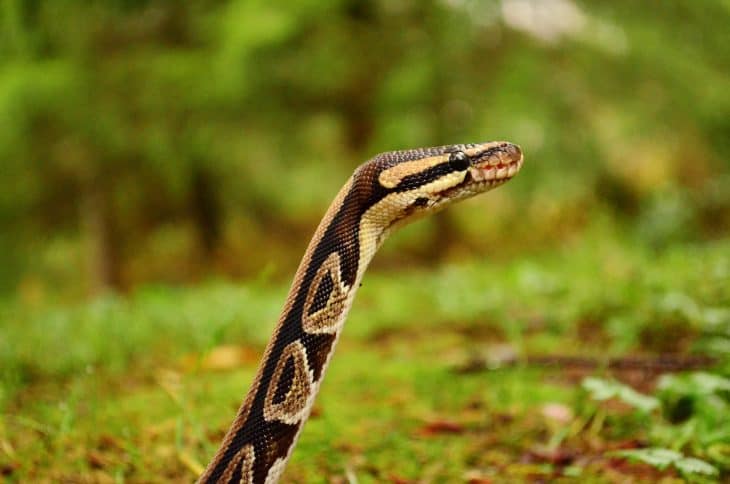
Ball pythons are truly beautiful. They are like living pieces of art with unique color patterns and morphs. Currently, there are about 6,500 morphs, and the numbers are still rising as breeders work non-stop to come up with the rarest morph that the world has yet to see. However, humans have set their threat level against these creatures, as they hunt more of these breed for their skin and meat. Humans also have trafficked ball pythons from their natural habitat to sell in pet shops and zoos in other countries. They may not be endangered as of the moment, but they have become highly abused animals.
Ball pythons have a docile attribute making them suitable pets for exotic pet enthusiasts and since they are non-venomous, even children are allowed to raise one as a pet. After being domesticated, ball pythons are alright with being held by humans every now and then. Wanna know more about ball pythons? Here is our list of facts that you will surely enjoy reading.
- They are also called the Royal Pythons.
- It is a python species native to West and Central Africa, where it lives in grasslands, shrublands, and open forests.
- They are listed as Least Concern on the IUCN Red List because of their wide distribution.
- Hunting for its meat, and the international pet trade, threaten its existence.
- This nonvenomous constrictor is the smallest of the African pythons, growing to a maximum length of only 182 cm (72 in).
- The name “ball python” refers to its tendency to curl into a ball when stressed or frightened.
- In 1802, George Shaw proposed the scientific name, Boa regia, for a pale variegated python from an indistinct place in Africa.
- François Marie Daudin proposed the generic name Python in 1803, for non-venomous flecked snakes.
- The ball python is black or dark brown with light brown blotches on the back and sides. Its white or cream belly is scattered with black markings.
- Their babies are called hatchlings.
- They are native to Northern and Central Africa.
- A tribe in Nigeria considers them sacred.
- They are also non-venomous.
- Ball pythons don’t have the same patterns.
- They can live up to 45 years in captivity.
- A female ball python can lay up to 11 eggs at once.
- Ball pythons are the smallest breed of pythons.
- Hatchlings have more colorful and vibrant skin patterns.
- Females are bigger than males.
- They are known for their defense strategy that involves coiling into a tight ball.
Was this page helpful?
Our commitment to delivering trustworthy and engaging content is at the heart of what we do. Each fact on our site is contributed by real users like you, bringing a wealth of diverse insights and information. To ensure the highest standards of accuracy and reliability, our dedicated editors meticulously review each submission. This process guarantees that the facts we share are not only fascinating but also credible. Trust in our commitment to quality and authenticity as you explore and learn with us.
